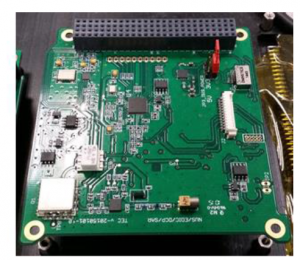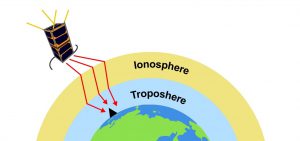Total Electron Content Payload for Nano-Satellite


The Total Electron Content (TEC) is defined to be the total number of electrons along a path between two points, which in this case is the satellite and ground station. TEC measurement is important for the correction of propagation effects on applied radio systems such as the Global Positioning System (GPS). These radio waves are subjected to distortion effects arising from the free electrons as they pass through the ionosphere, resulting in a lengthening of the apparent path traveled by the waves. By having TEC data, a model to describe this disturbance can be constructed to obtain a more accurate measurement of position. TEC measurement has been used in earthquake monitoring, modelling and prediction, in which a significant reduction in TEC is observable for at least 3 days before major earthquakes.
A new approach of characterizing the atmospheric TEC, using three equally-spaced tones with a known phase relationship, was proposed in the Galassia mission. This method allows the use of three continuous waves transmitted down to the ground station with the three signal frequencies spaced appropriately. Moreover, it is a cost-effective alternative to the use of phase coherent signals or atomic clocks, which are commonly found in other TEC measurement methods.
Galassia was launched on 16 December 2015 as the first nano-satellite of NUS developed by undergraduate students. It is now orbiting the Earth at an altitude of 550 km to accomplish its missions. The student-designed, TEC primary payload has proven to be operating well in space. Since the launch, a series of measurements at the ground station have been done in pursuit of characterizing TEC in the ionosphere above Singapore using the three-tone approach.

